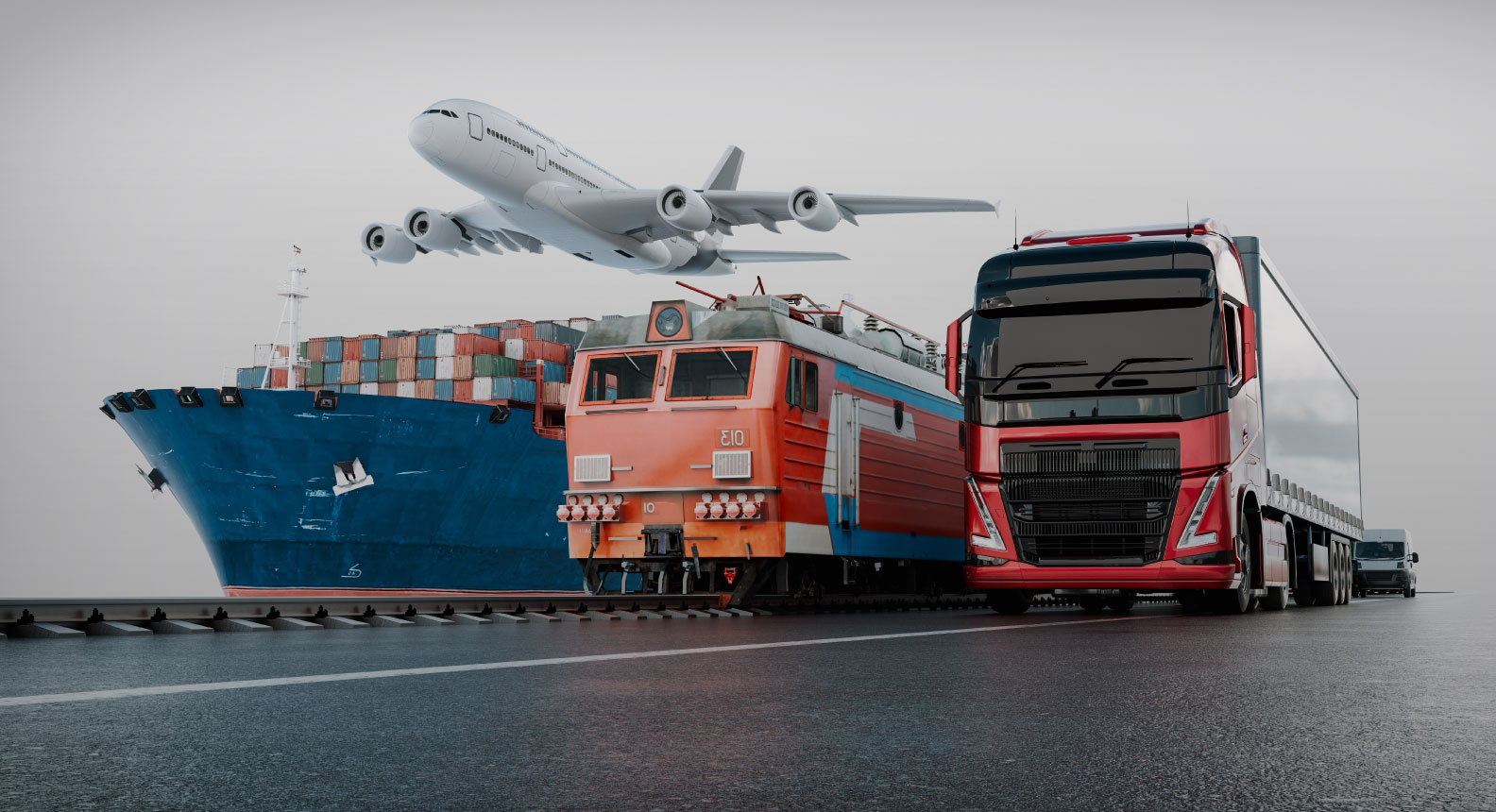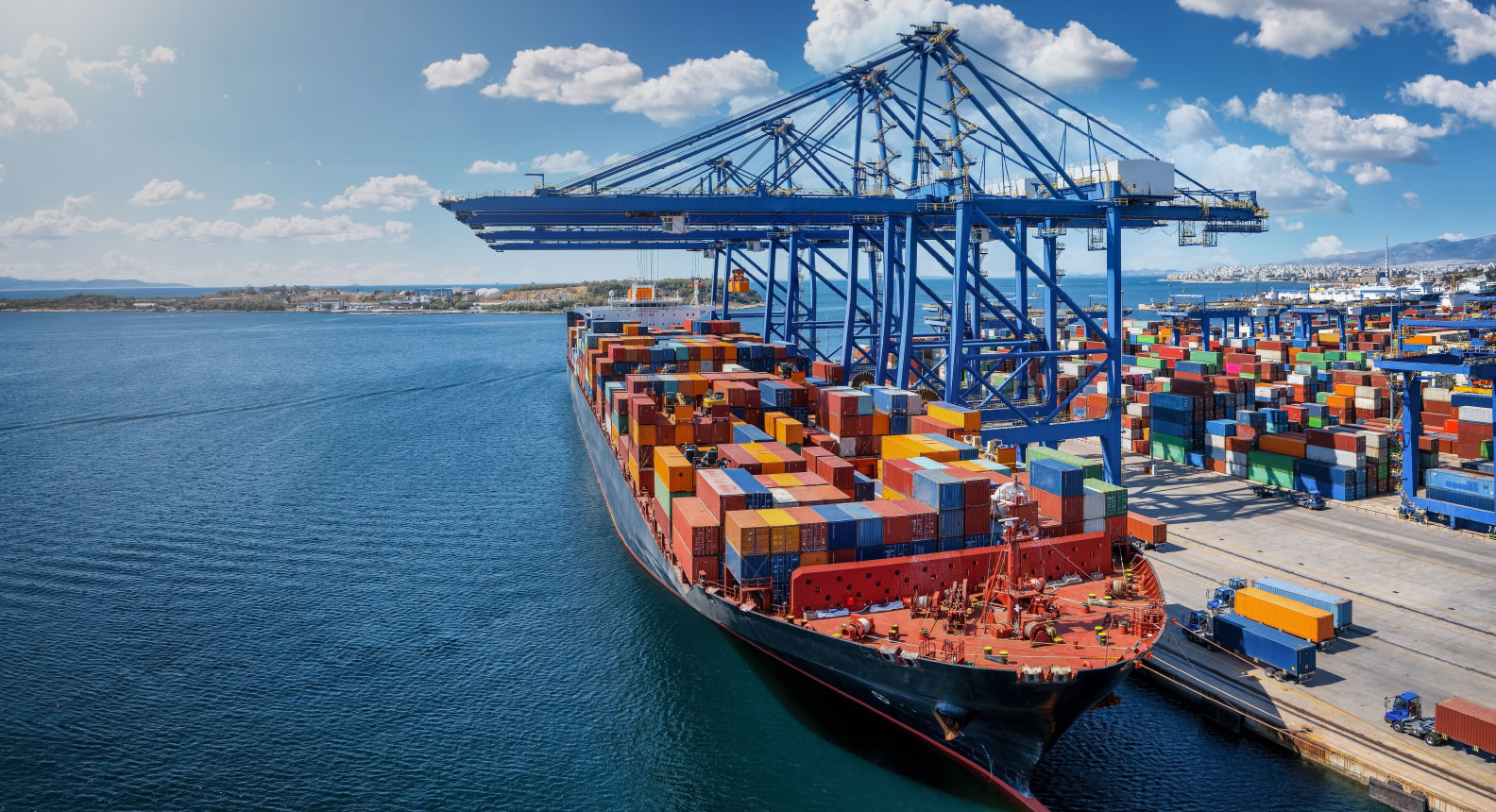In an increasingly complex geopolitical landscape, companies often seek reliable global shipping solutions. For example, do you remember the Suez Canal crisis of 2021, when the massive container ship Ever Given became lodged sideways across the canal? The blockage halted global trade for six days, leading to delayed cargoes, port congestion, and missed shipping schedules for months…
Incidents like these but also recent political tensions are reshaping trade routes, environmental regulations are tightening, and consumer expectations for fast deliveries are at an all-time high. In this context, single-mode transportation strategies are no longer sufficient. This is where multimodal logistics comes into play, both as a shipping strategy and technological evolution. Yet, technology integration often stands out as a challenge, as it must unite disparate systems for real-time monitoring and management.
In this blog post, we will briefly examine what multimodal logistics entails, the benefits it brings to businesses, and how technologies, particularly artificial intelligence (AI), may unlock its potential.
What is Multimodality in Logistics?
Multimodality in logistics is often associated with the integration of several modes of transportation, such as sea, air, rail, and road, under one contract and with a single transport operator for the movement of goods from point A to point B, often across borders. A widespread definition is provided by the United Nations Conference on Trade and Development (UNCTAD), according to which:
“International multi modal transport” means the carriage of goods by at least two different modes of transport on the basis of a multimodal transport contract from a place in one country at which the goods are taken in charge by the multi modal transport operator to a place designated for delivery situated in a different country.
Multimodal transportation differs from intermodal transportation, which involves different modes of transport but under separate contracts for each part of the journey. Therefore, the multimodal approach is generally considered more integrated, flexible, and effective, which are just a few of the key benefits that contribute to its development.
Multimodal Logistics Specifics
Advantages
By combining the strengths of various modes of transport, multimodal logistics is characterized by a set of distinct advantages. These may include:
- Higher flexibility, reliability and efficiency of supply chain operations – companies can manage changing conditions, mitigate risks from relying on a single mode of transport, and make the best use of transport infrastructure.
- Optimized transportation costs – businesses can pick up the most cost-efficient mode of transport for each part of the journey.
- Decreased environmental impact – companies can reduce their ecological footprint by moving some of their transport activities from the road to the rail or the water.
- Enhanced customer experience – customers can benefit from reduced delivery times and disruptions, and more cost-effective and sustainable modes of transport.
Market Size
In 2024, the global multimodal transport logistics market size was estimated at USD 726.9 million and is projected to reach USD 1,207.82 million by 2033. The sector continues its transformation through automation, sustainability, and digital connectivity. Although multimodal transportation has been expanding globally, Europe has been at the forefront of the shift in the multimodal logistics market, with Germany and the Netherlands leading the way. This has been supported by a focused EU policy of multimodality, aimed at promoting sustainability, integrating transport modes, and ensuring interoperability at all levels of the transport system.
Advanced Technologies in Multimodal Logistics
Tech-enabled Multimodal Logistics
Multimodal logistics is often characterized by the application of digital technologies. These may include freight resource management systems, terminal and port information and communication systems, container tracking IoT, augmented reality (AR) technology that displays real-time location information, etc. Further research shows that the utilization of AI in this respect deserves special attention. It may include predictive analytics, route and resource optimization, smarter warehousing, real-time tracking, demand forecasting, etc.
To illustrate the application of tech-enabled multimodal logistics in 2024, almost half of the multimodal freight volumes (48%) were managed by integrated logistics platforms, utilizing digital tracking and automated documentation across transport modes. GPS fleet monitoring, container-led IoT sensors, and advanced multimodal transport planning tools led to a 21.6% reduction in delivery inconsistencies. Globally, more than 62% of logistics service providers applied route optimization algorithms to coordinate container movements across modes.
AI for Routing and Scheduling Optimization
Being the preferred choice of companies, route and schedule optimization deserve consideration on their own, especially within the context of artificial intelligence (AI) solutions.
AI-driven route optimization and scheduling leverage several advanced techniques to improve logistics efficiency. For example, predictive analytics plays a crucial role by analyzing both historical and real-time data such as weather conditions, traffic patterns, port delays, and cargo capacity. This helps anticipate disruptions and identify potential bottlenecks in supply and demand, enabling companies to adjust routes and schedules to avoid delays proactively. Machine learning models further enhance route planning by learning from previous shipments. These models take into account numerous variables, including fuel costs, driver availability, transit times, and regulatory constraints, to recommend optimal multimodal transportation paths.
Additionally, AI enables real-time dynamic routing by integrating live data from GPS systems, IoT sensors, and transportation management platforms. This allows the automatic recalculation of routes in response to sudden changes, such as accidents, equipment failures, or port closures, ensuring timely deliveries. Load and capacity optimization, as well as resource scheduling, are other prominent practices that employ AI for intelligent routing and scheduling.
By harnessing the power of AI across predictive analytics, machine learning, and real-time data integration, companies can transform logistics operations into agile, data-driven systems that consistently deliver efficiency, reliability, and cost savings.
Real-world Application
Global shipping and logistics giants (e.g., DHL, UPS, Maersk) now use AI-driven control towers that integrate data from ships, trucks, trains, and aircraft. These platforms coordinate handoffs, track container-level status, and optimize customs clearance to reduce delays at ports and borders.
Furthermore, AI contributes to supply chain resilience – during disruptions such as natural disasters or geopolitical events, AI helps reroute shipments across alternative transportation networks in real-time by evaluating risk, capacity, cost, and time constraints.
Sirma’s experience in the sector is multifaceted, comprising of more than 40 successful projects. For example, for logistic leaders such as DHL Sirma delivered technology services leading to dynamic pricing and smart rerouting. Based on that and its overall domain knowledge, our transportation and logisitic team is ready to be your partner in making the most of your multimodal operations.
Final Words
Thanks to its advantages, multimodal logistics is experiencing a steady rise. It is often supported by state-of-the-art digital technologies that unveil its potential. In this respect, AI plays a pivotal role in various aspects of the logistics process. Route optimization and scheduling are prominent examples of the latter that have been utilized by the majority of multimodal stakeholders.


